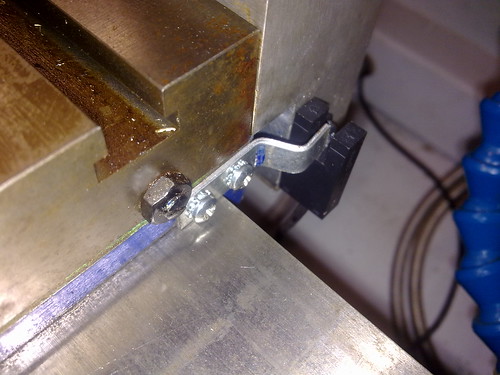341
Show"N"Tell ( Your Machines) / Re: Conect 121 lathe retro
« on: October 24, 2012, 02:43:05 AM »
Here's a little thought provoking issue for you.
With the (pretty heavy) X-axis motor mounted on the rear, will there be noticeable movement/vibration issues when using a front mounted cutting tool?
I'm probably over thinking it (I'm stuck in a **** hotel and never slept much last night!), but with such a large motor on the rear, it's going to cause the whole carriage/cross slide assembly to tilt towards the rear due to any play/flex. When you then take a large enough cut with a front mounted tool, it's going to counteract the weight of the motor, and the assembly will tilt to the front.
The only reason I've been thining about it, is I want to upgrade the x-axis motor, which involves a heavier motor, and moving it further rearwards to allow room for a bearing block and a proper bearing block.
With the (pretty heavy) X-axis motor mounted on the rear, will there be noticeable movement/vibration issues when using a front mounted cutting tool?
I'm probably over thinking it (I'm stuck in a **** hotel and never slept much last night!), but with such a large motor on the rear, it's going to cause the whole carriage/cross slide assembly to tilt towards the rear due to any play/flex. When you then take a large enough cut with a front mounted tool, it's going to counteract the weight of the motor, and the assembly will tilt to the front.
The only reason I've been thining about it, is I want to upgrade the x-axis motor, which involves a heavier motor, and moving it further rearwards to allow room for a bearing block and a proper bearing block.


